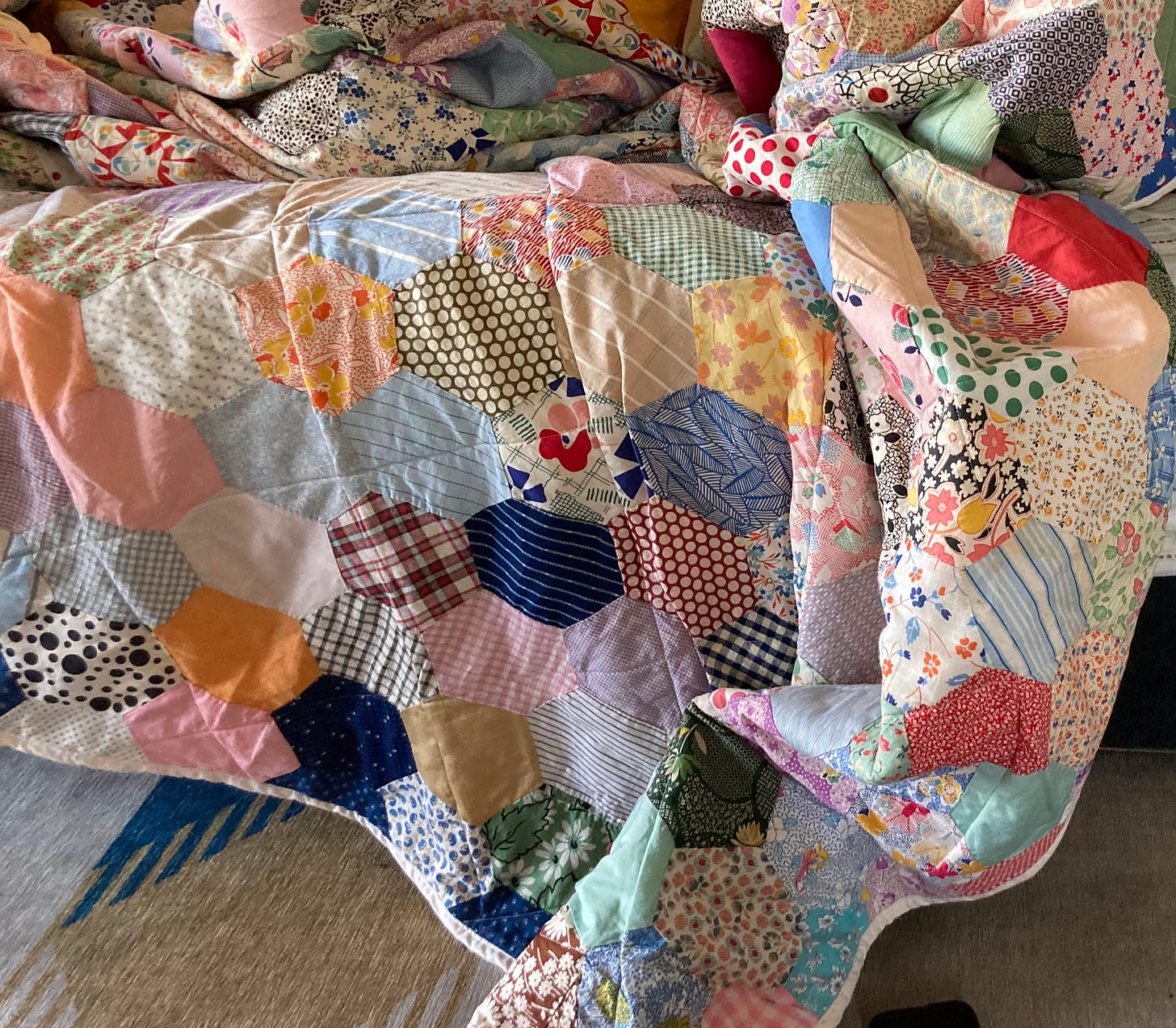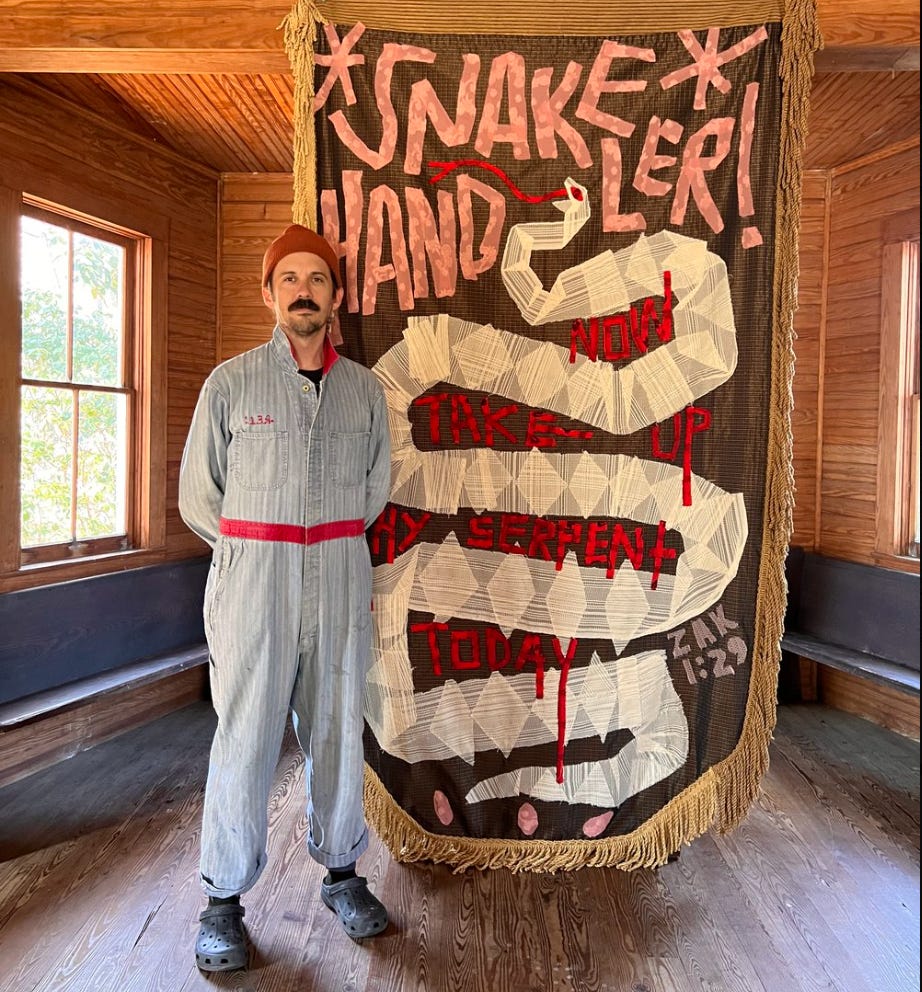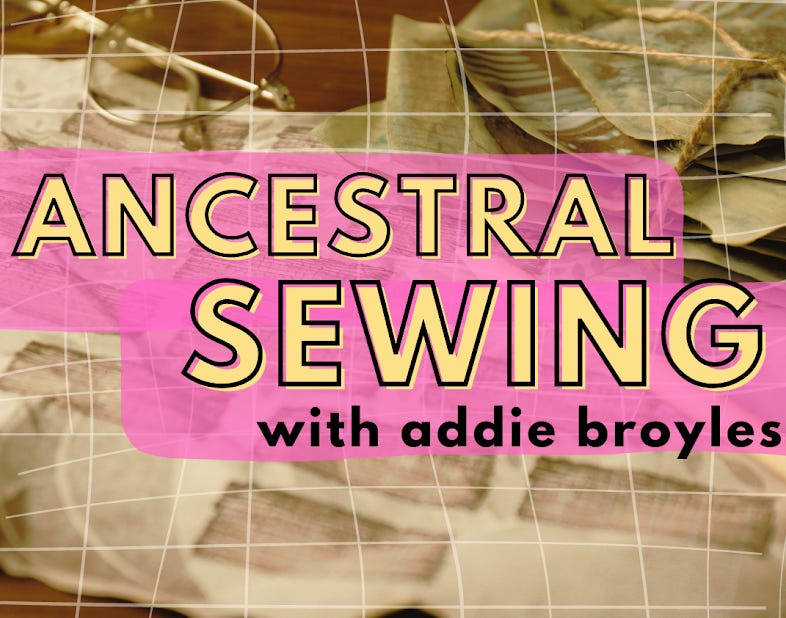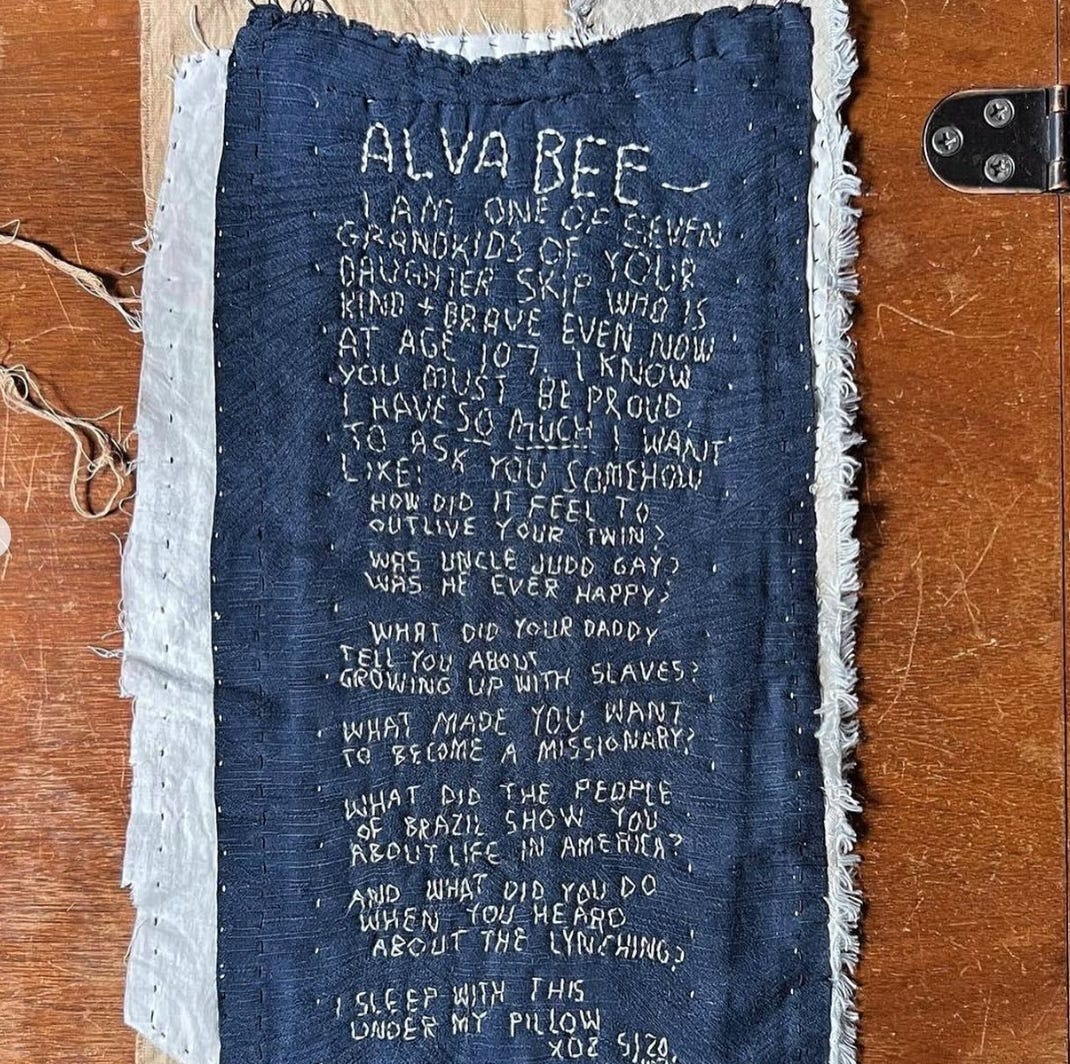Quilting has always been a family affair. Not because my family is full of quilters, but because nearly every quilt I have made has been a way to express myself and my connection to my family.
My first two quilts I ever made were baby quilts embroidered with my children’s names. (I used a log cabin pattern to make a snail. So very cute.) From the same book where I got that idea, I found a dachshund pattern, so I made a quilt for my grandmother with the names of each of her beloved weenie dogs.
In the 13 years since, I’ve made baby quilts and mama quilts and, most recently, an old family quilt some 70 years in the making.
Longtime readers of The Feminist Kitchen know that I spend a lot of time thinking about how projects like these can help us process the feelings and emotions that come with growing older, losing loved ones and working through the trauma in our family lineage.
For instance, not long after finishing that quilt my great-grandmother started in the 1940s, I visited the grave of her ex-husband, the one who walked out on her when she had two teenagers at home.
After months spent handling 64 square feet of her precious hand-stitched patches, I was able to stand at his grave and say, without the anger that plagued his wife and daughter, “I hope you found what you were looking for.” I meant that with sincerity and compassion. He was obviously troubled and didn’t have access to the mental health care that he needed. I know that now. They didn’t know that then.
That’s a pretty clear example of what I would call ancestral healing, which I define as getting in right relationship with the people who came before so we can do better for the people who are coming after.
Zak Foster is one of the people who understands the intersection of quilting and ancestral healing.
He’s the founder of the Quilty Nook, an online community of makers who share his sentiment that quilting is so much more than patchwork. I found him on Instagram thanks to his burial quilts, and as soon as I started learning about his work, I felt an immediate kinship. Zak doesn’t just quilt; he has a quilting practice that he uses to help him process what’s going on within him and around him.
A few years ago, he started something called the Southern White Amnesia project, where he uses fabric as a canvas to explore power, privilege, whiteness, oppression and memory. He consistently elevates makers of the global majority and, using his joyful sense of Southern charm, pushes people to have conversations they might not otherwise have.
That’s why I threw my name in the hat when he asked for workshop collaborators earlier this year.
“What if we did an ancestral healing workshop?” I asked. “What would that look like?” he responded.
We jumped on the phone and immediately connected over tarot, ancestry work, grief and the power of using our hands to help unpack what’s going on in our hearts.
That’s how I ended up on his calendar for a workshop on Oct. 31 called “Ancestral Sewing with Addie Broyles.”
During this 90-minute workshop, which is free for members the Quilty Nook, Zak and I will talk about our own approach to ancestral quilting and share prompts for helping people get started on their own projects.
(Zak also hosts a podcast called “Seamside,” where he has these kinds of conversations with quilters across the country. If he ends up posting the audio from this workshop on the podcast, I’ll include a link to it in the notes of a future newsletter.)
I’m so glad we’re meeting on Halloween and the eve of Day of the Dead, a time when many of us feel the transition into a time when we are thinking about our late loved ones even more than usual.
Unlike Zak, I don’t quilt year-round, so this is traditionally the time of year when you’ll find me at my sewing machine, working through the problems in my head by putting my head down and focusing on the stitches at hand.
I know that quilting is not exactly a universal hobby, but I wanted to share about this workshop with you because I know each of us has hobbies that act as intersectional spaces. No matter if you like to garden, cook, hunt, fish, camp, rebuild car motors or make knives or watercolor paintings or herbal tinctures, I want you to encourage you to think about the ancestral healing that can happen through these activities and the time you spend doing them.
Some questions I ask to start this meditation:
When did I know that this activity was “for me”? Who else in my family line might have enjoyed this particular activity? What power did it give them? What else did they make? Why?
If there aren’t any makers or do-ers in your family, what relationship did or didn’t they have with creativity? Why might that have been? What privileges do I have that they didn’t? What limitations did they have that I don’t and vice versa?
What do I get out of these activities or practices that have nothing to do with making money? How does this change my perspective of “free time”?
I think you could apply this to just about anything you do when you have down time, even if it’s not a “hobby” or would be considered creative work. Honestly, I could do a whole meditation on the role that television played in my ancestors’ lives, but that’s for another day.
I am sending this week’s newsletter on one final ancestral trip of the fall — to Chicago, where I’m attending the celebration of the 75th anniversary of the Swedish-American Historical Society, an organization I joined last year when I started getting serious about this ancestral work.
I’m staying in Andersonville, one of the most historic Swedish neighborhoods in the country, where I’ll be exploring the Swedish American Museum and eating at as many of the Swedish restaurants and bakeries that I can find.
Will send more soon. Thank you so much for your support of this newsletter and all my projects. Some of you have been with me since before what I call The Great Integration that led me away from my job as a food columnist and into this life as an independent creator, consultant and, yes, ancestral healer.
Thank you for believing in me. I hope you find something in this — and every — newsletter that helps you look at your own life in a new way.
Like my favorite DJ, John Richards of KEXP, says: You are not alone.
Take good care,
Addie








A friend once shared, how the women in her family quilted together and how it was a place of sharing sorrows and joy. I imagine a place of healing. She also spoke of 'Treating friends like family and family like friends.
Addie, I love this creative article and photos ... I remember well a powerful creativity workshop a quilter from many miles away came to present at Exploring Creativity workshop in Lockhart Prison in 2001- she took hours cutting various wallpaper samples into shapes and gave each inmate a sheet of good sturdy art paper and they could choose hands-full of colorful samples to paste & create their quilts about family memories. She had grown up as a child sitting under her aunts and the quilters feet then began her own art. Many inmates found meaning and release of memories as we sat in circles cutting, pasting snd quilting... and story telling of course!